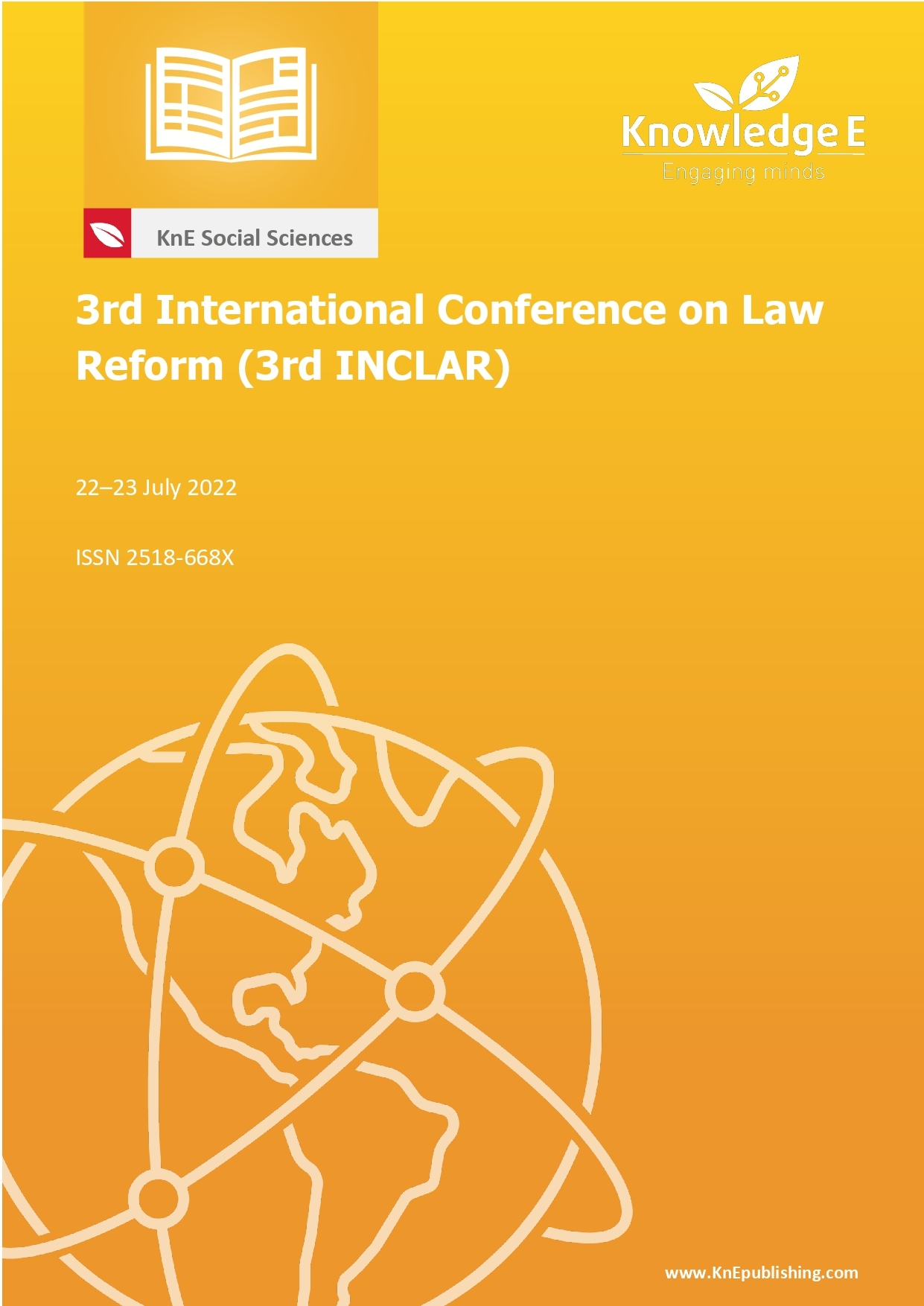Legal Liability of the Liquidator for Settlement of Assets and Legal Entity Status due to the Dissolution of the Limited Company
DOI:
https://doi.org/10.18502/kss.v7i15.12133Abstract
A limited liability company has legal responsibility for all consequences arising from legal actions taken during the company’s activities. When a limited liability company is dissolved, it must carry out various settlements and responsibilities which is called a liquidation process. The liquidation process begins with the determination of the Extraordinary General Meeting of Shareholders’ (GMS)’s decision, which will then be continued with the completion of the company by registering, and disbursing the company’s assets which are distributed to parties entitled to own shares. And deletion of company status. During the liquidation period, a person will be appointed as a liquidator as a person who has the right to lead and carry out the settlement process until the legal entity status ceases. The liquidator also has responsibilities for the payment of payment obligations and third settlements that must be made as well as other settlements that need to be made during the current period. However, in fact, many do not understand the legal sanctions for the dissolution of a limited liability company and the consequences of not carrying out the liquidation stage. The purpose of this study is to explain the legal consequences of the dissolution of the company and the obligations of the liquidator in managing assets and legal status in this company, the liquidator has an important role in the process. From disbandment. Therefore, it is necessary to study how the liability of the liquidator in the stage of property settlement and the abolition of the legal entity status in the limited liability company is dissolved. This research’s method is descriptive qualitative which describes the phenomena that occur then analysis and security.
Keywords: dissolution, limited liability company, liability, liquidator
References
[2] Kurniawan KD, Hapsari DR. Kejahatan Dunia Maya Pada Sektor Perbankan Di Indonesia: Analisa Perlindungan Hukum Terhadap Nasabah. Volume 10. Pleno Jure J. Ilmu Huk. LL-DIKTI Wil. IX Sulawesi; 2021.
[3] Riyanto A. “HAK-HAK PEMEGANG SAHAM DI INDONESIA,” https://businesslaw. binus.ac.id/, 2018.
[4] Paula P. Tanggung Jawab Perseroan Terbatas Dalam Likuidasi. Acta Diurnal J. Ilmu Huk. Kenotariatan. 2021 Nov;4(2):132–349.
[5] Riani S, Nurhasanah P, Afwa U. Pertanggungjawaban Hukum Direksi Induk Terhadap Risiko Bisnis Anak Perusahaan pada Holding Company BUMN. Indones. Law Reform J. 2021 Nov;1(3):303–17.
[6] Justisi G, Supriyatin U, Herlina N. Tanggung Jawab Perdata Perseroan Terbatas (PT) Sebagai Badan Hukum. J. Ilm. Galuh Justisi. 2020 Mar;8(1):127–44.
[7] Undang-Undang No. 40 Tahun 2007 tentang Perseroan Terbatas. .
[8] Marzuki PM. Penelitian Hukum : Edisi Revisi. Jakarta: Prenadamedia Group; 2014.
[9] Undang-Undang No. 40 Tahun 2007 tentang Perseroan Terbatas. .
[10] Undang-Undang RI. 40 Tahun. Tentang Perseroan Terbatas; 2007.
[11] ANGELINE, “TINJAUAN YURIDIS TANGGUNG JAWAB LIKUIDATOR DALAM PEMBERESAN HARTA PERSEROAN TERBATAS YANG DIBUBARKAN,” UNIVERSITAS SUMATERA UTARA, 2016.
[12] Suryati S, Sardana L, Disurya R. “Legal analysis of limited company which was submitted to bankruptcy.” Nurani J. Kaji. Syari’ah dan Masy. 2022 Jul; 22(1): 109–120, Jul. 2022. https://doi.org/10.19109/nurani.v22i1.10801.
[13] Paula, “TANGGUNG JAWAB PERSEROAN TERBATAS DALAM LIKUIDASI,”. J. Ilmu Huk. Kenotariatan Fak. Huk. Unpad. 2021;4(2):342.

